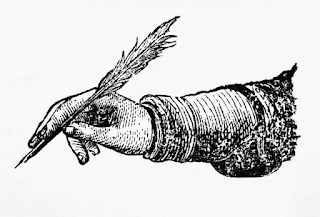This week we’re talking about the connections between terrorist organizations and political parties and/or non-violent political movements. Such ties, whether formal or informal, are more common than you might think, including here in the United States.
 |
| An Oregon lumber company’s offices burn after an ELF arson attack. |
In an article originally published in 1991, political scientist Leonard Weinberg argues that terrorism and terrorist groups emerge in situations when an alienated and highly motivated elite confronts the indifference of the population they hope to lead in challenging those in power. In short, terrorism can emerge from the failure of non-violent politics to produce a desired change in the status quo.
This is key to understanding why terrorism is so common to democratic societies. The political scientist Ted Gurr argued that campaigns of terrorism in democracies grow out of larger political conflicts, and that they reflect the political beliefs and aspirations circulating within a larger society. Under these circumstances, some may lose patience with conventional politics and look for new tactics that will have greater impact. This, Gurr argues, may include experimenting with terrorism.
Given this, how do links between political parties and terrorist groups happen? Weinberg argues there are several common patterns:
- A party deliberately forms a violent subsidiary to pursue its goals by terrorist means.
- A terrorist group promotes the formation of a political party to pursue its goals above ground.
- Factional split, where some segment of a party, dissatisfied with the direction leadership is taking it, breaks away to pursue its goals independently through violence.
- Strategic shift, where a violent group concludes its operations and reconstitutes itself as a political party participating in normal electoral politics.
- Origins in a shared political movement, where some of the movement’s followers favor legal, political-party means to achieve their goals while others, who doubt the efficacy of this approach, choose the terrorist alternative.
It is this later kind of group that is our focus this week. The Earth Liberation Front grew out of the radical Earth First! environmental movement in Great Britain in the early 1990s. As sociologist Paul Joosse explains in a 2007 article in the journal Terrorism and Political Violence, ELF emerged out of a burgeoning ideological cleavage within Earth First!, with those who would become ELF committed to advancing the cause of radical environmentalism through “direct action.”
There is a terrific 2011 documentary which tells the story of an Earth Liberation Front activist in the Pacific Northwest and his pathway into and back out of violent radical environmentalism. I’ll be showing it to my students this evening, and you can watch it by clicking on the link below.
Now on to this week’s look back at the recent history of terrorism in the United States.
- Oct. 11, 1998 – Rock Springs, Wyo.: In a joint operation, seven members of the Animal Liberation Front and Earth Liberation front free horses and attempt to burn down the federal Bureau of Land Management wild horse corral in Rock Springs. The perpetrators placed incendiary devices near buildings and vehicles, specifically targeting a truck used to transport horses, but while the devices were being planted, one of the perpetrators prematurely opened one of the gates, and the horses started running loose, at which point, the group aborted the plan, and left behind sponges, gas cans, buckets of fuel, and some timing devices before fleeing the scene. The perpetrators were part of a group which called themselves “The Family,” which was responsible for some 20 cases of arson and eco-sabotage over the six year period.







No comments